Abstract: Recently usage of “Ordinals”, a system where one can embed image data into the Bitcoin blockchain has increased. In this brief piece, based on blockchain data, we analyse the growth of the Ordinals system. Up until 7 February 2023, we have identified over 13,000 of these transactions, which take up 526MB of Bitcoin blockspace. The total spend of these transactions is 6.77 BTC.

Overview
Ordinals embed image related data into the Bitcoin blockchain using the input field in Taproot transactions, the witness. Unlike the OP_Return scriptPubKey format, which some people may think is designed for arbitrary data, this Taproot input related data therefore receives the witness discount enabled with the SegWit upgrade in 2017. In addition to this, there is no consensus rule limiting the size of Taproot inputs and therefore the arbitrary data can take as much space as one wants (up until the blocksize limit of 4MB). In order to store large amounts of data before Taproot, one may have had to use multiple transactions or multiple inputs. Indeed, before Taproot there was a rich history of embedding all kinds of weird data into the blockchain. However, there are still policy rules and therefore these very large transactions will not be relayed by the node network and they must be sent directly to the miner.
Methodology
The Ordinals data is embedded in the OP_IF and OP_PUSH section of the Taproot input script. Ordinals transactions should contain an OP_Push “ord” to identify the transaction. We therefore simply searched across all Bitcoin transactions for this “ord” OP_Push string.
Results
The first Ordinals transaction we could find occurred on the 14 December 2022 and can be found here. The data we have analysed goes up to block height 775,500, which was produced on 07 February 2023 at 23:20 UTC.
Number of Ordinal transactions per block
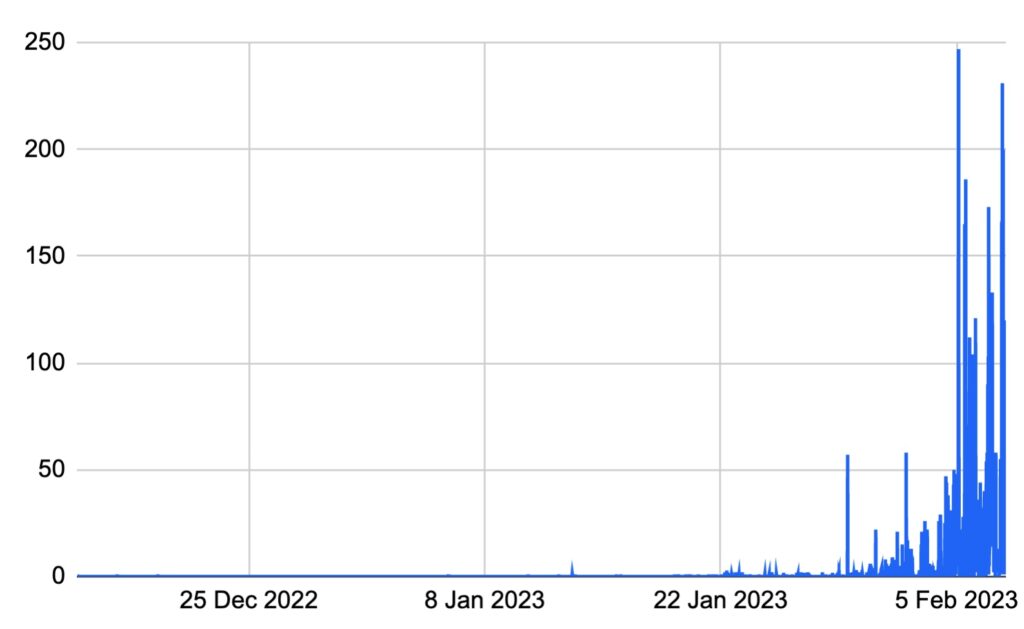
Source: BitMEX Research
Cumulative total number of Ordinal transactions
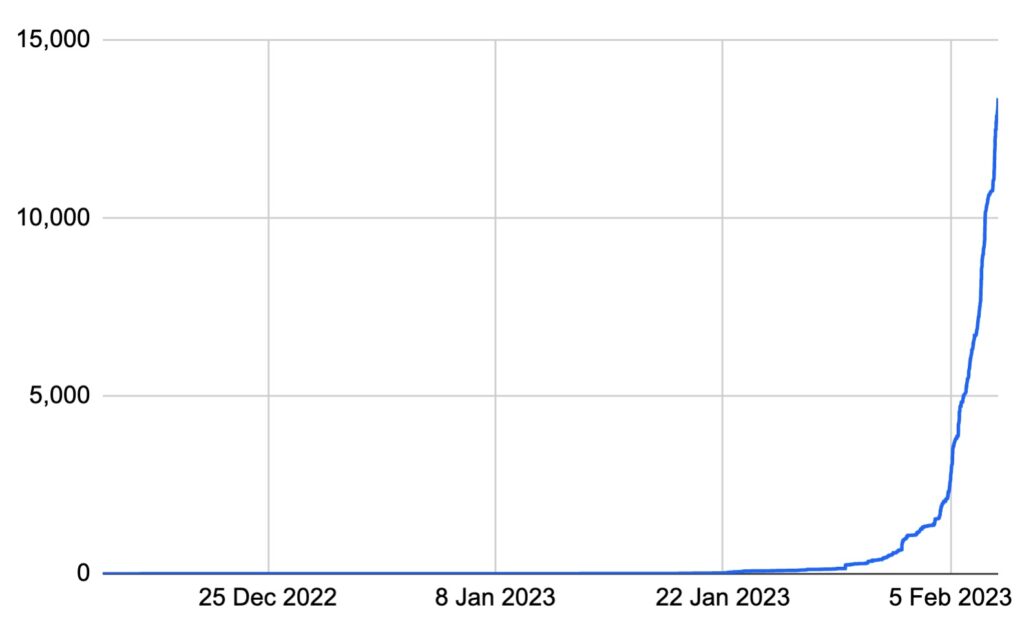
Source: BitMEX Research
Ordinal transactions as a percentage of total transactions (Rolling 40 block periods)
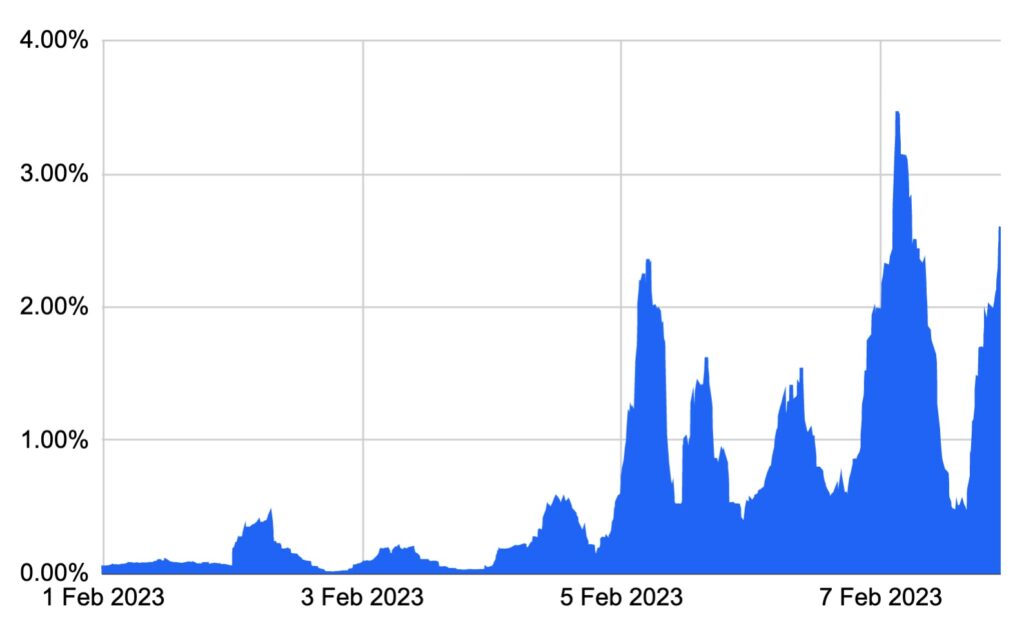
Source: BitMEX Research
Cumulative Ordinal block space usage (MB)
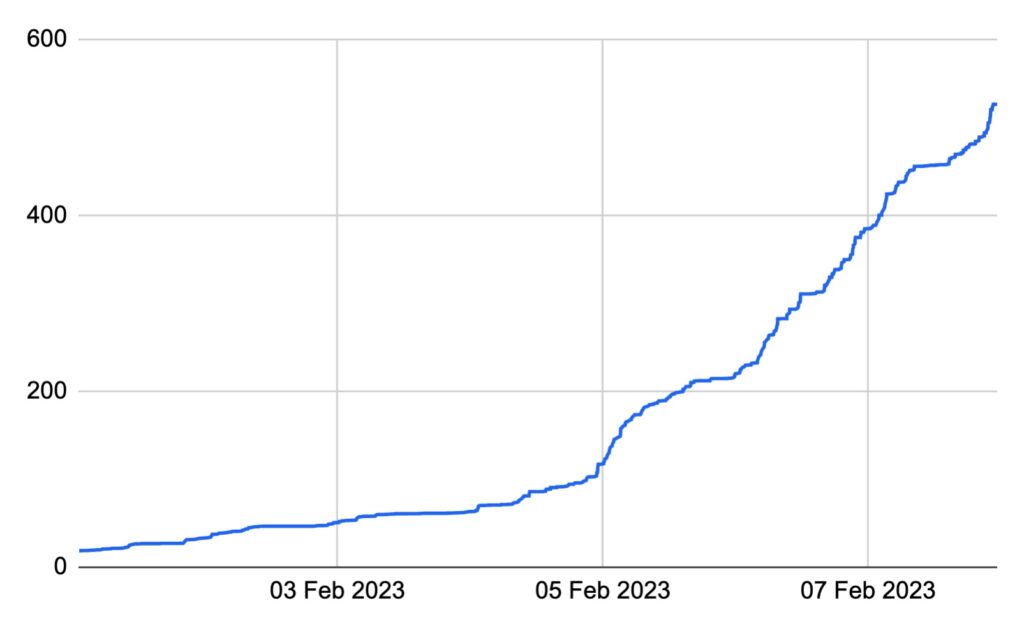
Source: BitMEX Research
Ordinal data per block (MB)
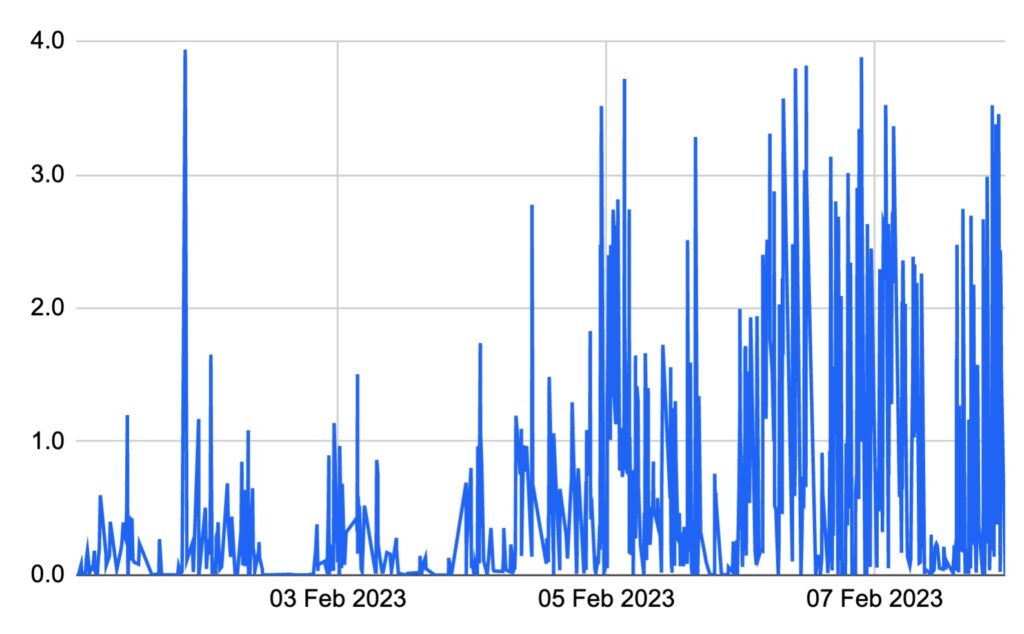
Source: BitMEX Research
Ordinal blockspace usage as a percentage of total usage (Rolling 40 block periods)
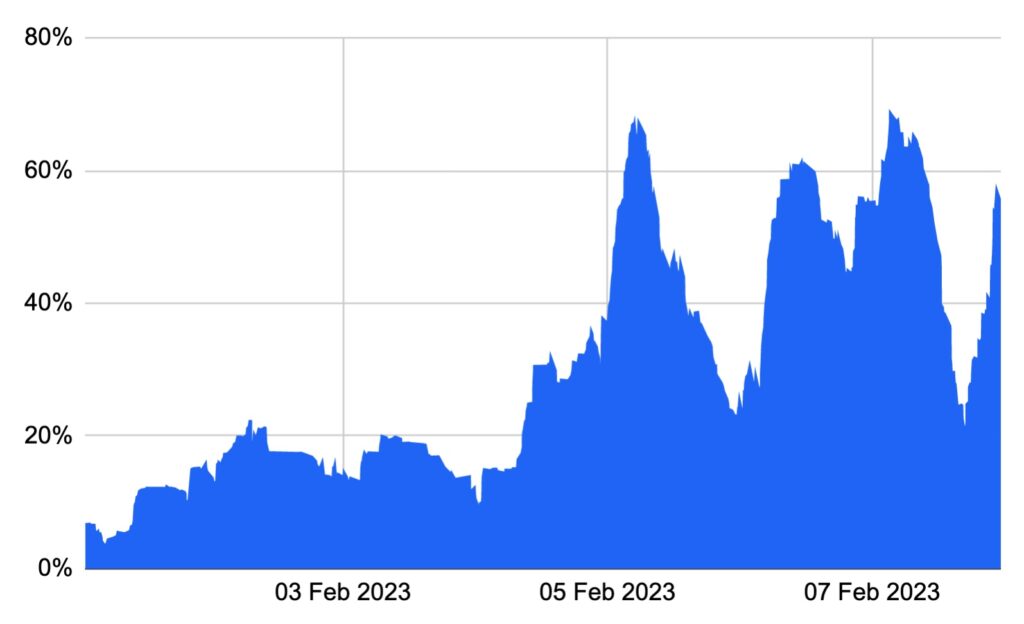
Source: BitMEX Research
Conclusion
The data shows a sharp pickup in Ordinals usage in February 2023. We will not discuss the benefits or problems associated with this usage of Bitcoin here, however you can read our piece from July 2022 about the 2014 OP_Return Wars, which covers many of the issues:
